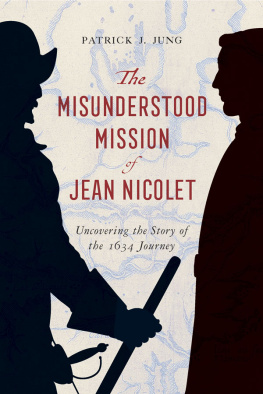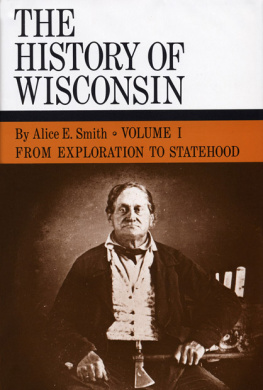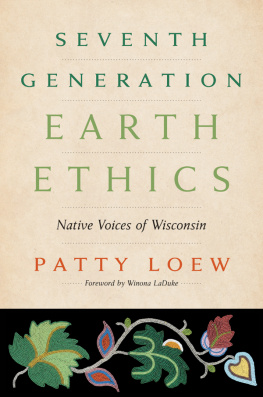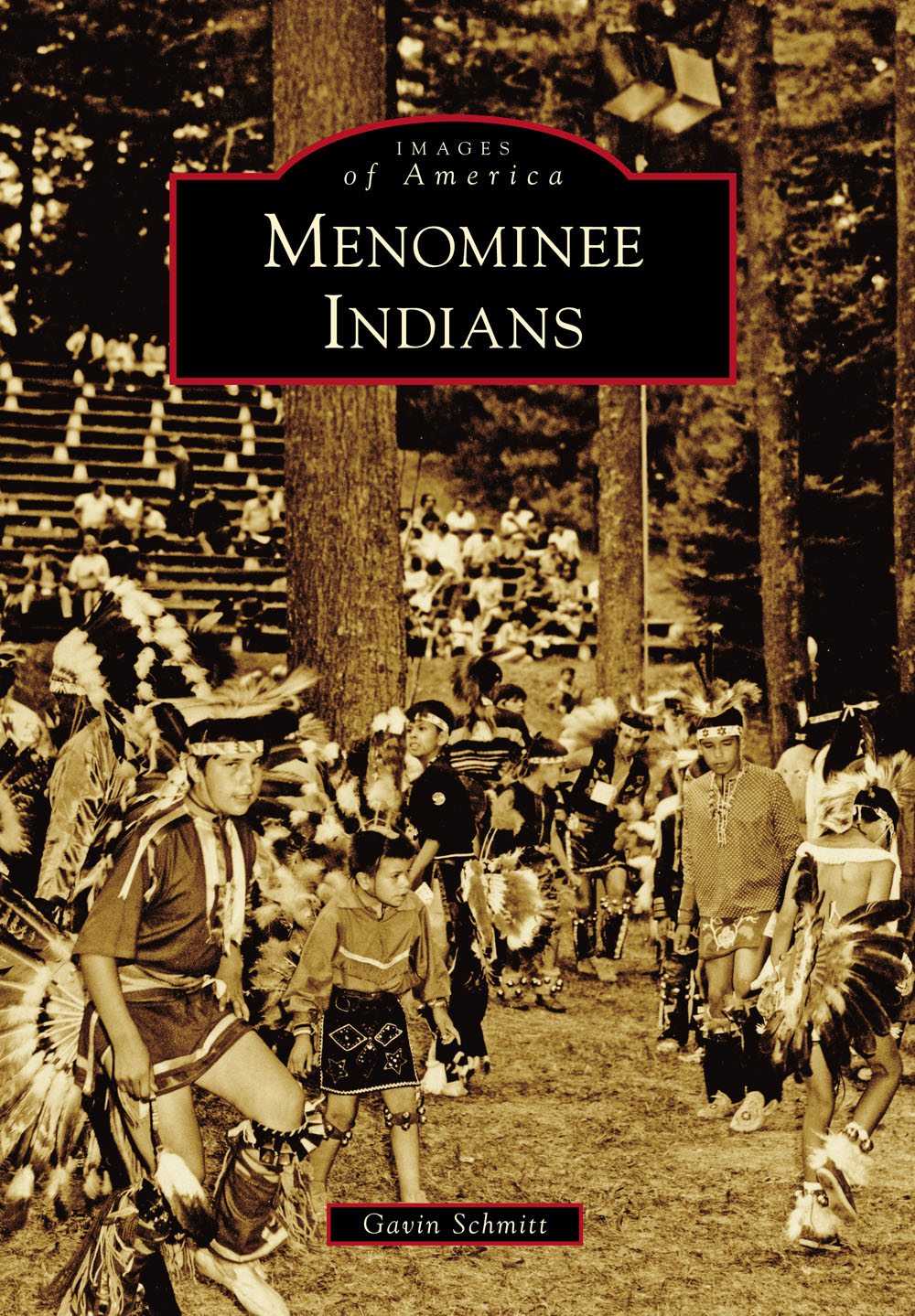
IMAGES
of America
MENOMINEE
INDIANS
ON THE COVER: For many Americans, their first experience of Menominee life is at a ceremonial powwow. It is therefore fitting that the readers first glimpse of this book is of a man in mid-dance. (Courtesy College of Menominee Nation.)
IMAGES
of America
MENOMINEE
INDIANS
Gavin Schmitt

Copyright 2016 by Gavin Schmitt
ISBN 978-1-4671-1630-5
Ebook ISBN 9781439656846
Published by Arcadia Publishing
Charleston, South Carolina
Library of Congress Control Number: 2015957313
For all general information, please contact Arcadia Publishing:
Telephone 843-853-2070
Fax 843-853-0044
E-mail
For customer service and orders:
Toll-Free 1-888-313-2665
Visit us on the Internet at www.arcadiapublishing.com
For Lindsay Mae, in hope that she grows to love her roots
CONTENTS
ACKNOWLEDGMENTS
Thank you, to anyone who has ever purchased or read one of my books. Because of you, the publishers allow me to keep making them. And thank you, Arcadia Publishing, for continuing to allow me to tell Wisconsins history to new audiences.
Thank you, to those on the reservation who helped in their own ways. This includes tribal administrator Jonathan Wilber and Rhonda Tucker at the cultural museum. Worth singling out are Jess Buettner and Leslie OKimosh at the Verna Fowler Library, who were invaluable. Unless otherwise noted, all images come from the librarys archives.
Thank you, to Kate Hermsen, the image magician. In cases where my knowledge of scanning and other technical matters is lacking, Kate was there to make the necessary adjustments.
And as always, no thanks go to my best friend Chelsea Dagger Zareczny, who did absolutely nothing for this book.
INTRODUCTION
For many people, Wisconsin history began in 1848 with statehood, but before the Germans, before the French explorers, the Menominees were here. In fact, the Menominees were always here. No history of Wisconsin would be complete without covering the contributions of this proud people.
From what is today Oshkosh, up through Door County and into the Upper Peninsula of Michigan, the Menominees made their homes and weathered the seasons for thousands of years. Although their territory has shrunk considerably, they have left their mark in the names of cities, rivers, lakes, and other landmarks. Even as far south as Milwaukee, the Menomonee Valley and Menomonee Falls are seen. (The spellings vary, but the inspiration remains the same.)
Over the last hundred years, the fighting spirit of the Menominees has been tested again and again, and they have proved themselves resilient. Through struggles of sawmill ownership, poverty, the termination of tribal status, and other trials, the Menominees have found a way. They restored the reservation, expanded milling operations, built new towns (such as Middle Village), and found new sources of income, not the least of which was the casino.
The 21st century will bring still more challenges, as the tribe must now fight to keep its membership going. As more tribal members marry outside of the reservation, the next generation will find itself unable to be on the rolls. The legend of Spirit Rock says that the Menominees will exist as long as the sacred rock does. But the rock has eroded, and it may only be a matter of time before the tribe is forced out of existence through assimilation.
This book will hopefully appeal to a wide audience. First, it is for the tribe, so that its members can see and recall their traditions. Second, it is for those outside the tribe, whether they be historians or anthropologists. There is a great deal worth knowing about the Menominee peopleboth happy and sad, but all fascinating in its own way.
And then there is the group I hope appreciates the book the most: the folks, like myself, who trace their ancestry to the Menominees or have vague memories of the reservation but are removed from it. In researching this book, I was able to recover and bring out an important part of myself, and it is my hope that those with Menominee blood, no matter how little, are able to reconnect in some small way.
One
EARLY HISTORY
As with all American Indian tribes, it is nearly impossible to determine an exact beginning. The Menominees were in Wisconsin thousands of years before Columbus discovered America, and even thousands of years before Caesar ruled Rome. When Europe was in its infancy, the Native Americans had already established several territorial boundaries and settlements, governed by their own sets of laws and agreements.
The Menominees began to interact with European settlers more from 1660 to 1765, due largely to the St. Francis Xavier Mission of the Roman Catholic Church. Permanent churches were eventually built in 1877 and 1908 and remain central places of worship today. Most tribe members are Catholic, though they have incorporated traditional beliefs into their Christian faith.
As European influence spread, native lands grew smaller and smaller. Sometimes, this was achieved by treaty, and other times, through armed conflict. The Menominee lands were reduced from over 10 million acres to around 235,000 acres today. If there is one silver lining, however, it is that the Menominee Nation is one of the few Native American groups whose final home is on ancestral land rather than having been pushed farther west.
This chapter covers the time period prior to the 1900s. Obviously, due to the lack of cameras, photographs and other images will not cover the complete breadth or depth of the tribes history. By necessity, it will be largely focused on the tribes interaction with the Europeans and Americans.

The game of lacrosse originated in the 1600s or earlier, and is generally attributed to the Iroquoian people in eastern North America. This photograph is evidence, however, that it was also played by the Menominees in the Midwest. (Courtesy Milwaukee Public Museum.)

Thanks to his stubbornness, Chief Oshkosh helped the Menominees obtain a permanent reservation in their Wisconsin homeland. Unfortunately, he died young (in 1858) and was not able to see his people through the early reservation years. (Courtesy Wisconsin Historical Society.)
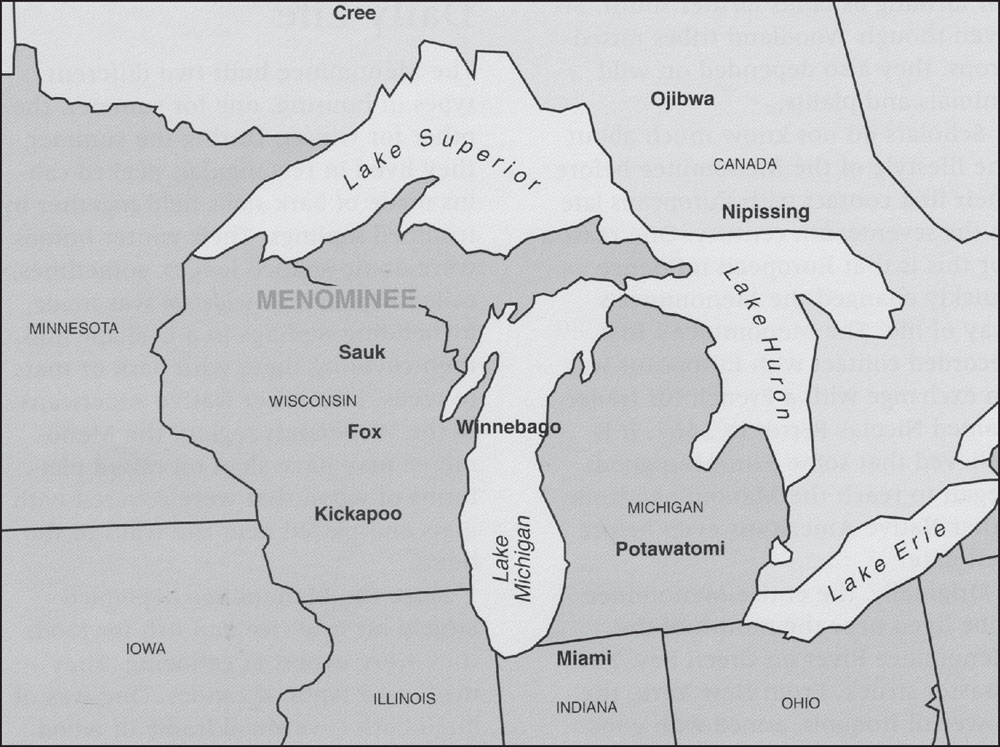
Like most native tribes, the Menominees lost or sold the bulk of their land to the Europeans. They are fortunate, however, in that they are one of the few tribes whose modern-day territory coincides with their ancestral lands.
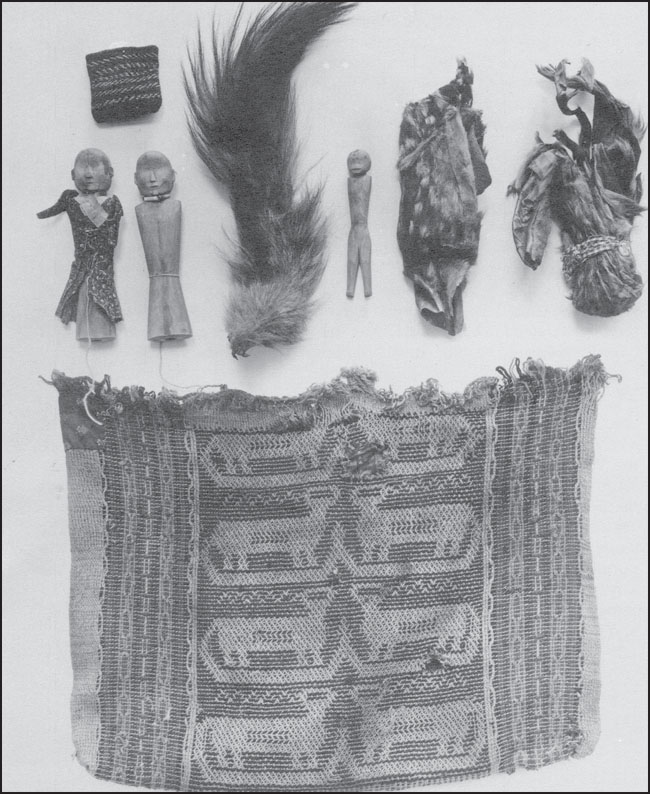
Pictured here is a Menominee hunting bundle. Hunters used these objects during rituals to ask the gods to protect and assist them during the hunt. (Courtesy American Museum of Natural History.)
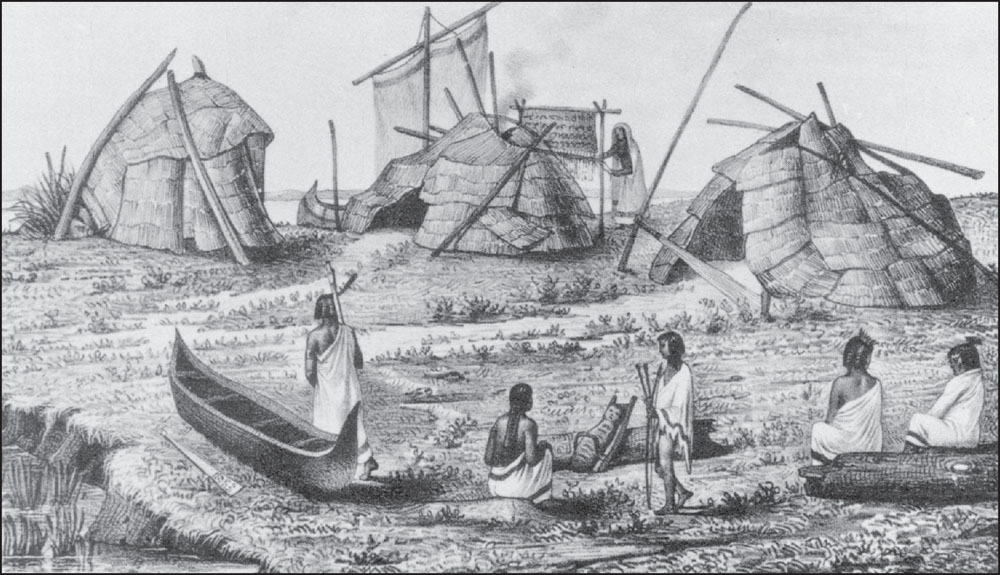
Next page







